Phellodendron chinense
[Medicinell användning] Denna produkt är barken från växten Huangqi eller Huangpi från familjen Rutaceae utan den yttre huden.
[Natur och smak och meridianer] Bitter, kall. Går in i meridianerna i njurarna, urinblåsan och tjocktarmen.
[Effekter] Rensar värme och torkar fukt, rensar eld och avgiftar och rensar värme från brist.
[Klinisk tillämpning] 1. Används för fuktig värme diarré, fuktig värme gulsot, liksom duggregn och smärtsam urinering, röda och vita flytningar, svullnad och smärta i könsorganen, svullnad och smärta i fötter och knän, och svaghet .
Förmågan hos Phellodendron chinense att rensa bort värme och torr fukt liknar den hos Scutellaria baicalensis och Coptis chinensis, men den är bättre på att ta bort fuktig värme i nedre delen av kroppen. För diarré kombineras den med Scutellaria baicalensis och Coptis chinensis; för gulsot kombineras det med Gardenia jasminoides och Artemisia capillaris; om den kombineras med Atractylodes macrocephala och Achyranthes bidentata, kan den användas för svullnad och smärta i fötter och knän, svaghet i de nedre extremiteterna; kombinerat med Anemarrhena asphodeloides, Radix Rehmanniae, Bamboo Leaf och Akebia, kan den användas för duggregn och smärtsam urinering; kombinerat med Angelica dahurica och Gentiana scabra kan den användas för vaginal svullnad och svaghet.
2. Används för värmegiftiga sår, eksem, etc.
Huangbai har goda effekter för att torka fukt, rensa eld och avgifta. Det används för att behandla fuktiga värmesår och eksem. Det kan tas oralt eller appliceras externt. Det kan tas internt med läkemedel som Huangqin och Gardenia, och appliceras externt med pulveriserad rabarber och talk.
3. Det används mot feber på grund av yin-brist, eller nattliga utsläpp och spermatorré.
Förutom att rensa bort verklig värme kan Huangbai också rensa virtuell värme för att behandla värmevallningar och benångning, och rensa njurbränder för att behandla nattliga utsläpp och spermatorré. Det används ofta tillsammans med Zhimu och Rehmannia.
[Receptnamn] Chuanbai, Chuanhuangbai (rå användning, rensa riktig eld), saltvattenstekt Huangbai (stekt vatten med salt, klar virtuell värme, rensa njurbrand)
[Allmän dosering och användning] En till tre qian, avkokt och tagit. Lämplig mängd för externt bruk.
[Kommentar] Huangbai, Huangqin och Huanglian är alla bittra och kalla mediciner, som kan rensa värme, torka fukt, rensa eld och avgifta. Men Phellodendron chinense kan rensa njurbrand och minska bristvärme, och kan ta bort fuktig värme i den nedre delen av kroppen; Scutellaria baicalensis är bra på att rensa lungvärme och kan lugna fostret; Coptis chinensis kan rensa hjärtbrand och eliminera rastlöshet, och är bra på att stoppa kräkningar. Detta är skillnaden mellan de tre läkemedlen. Därför är det allmänna talesättet att Scutellaria baicalensis behandlar den övre delen av kroppen, Coptis chinensis behandlar mitten av kroppen och Phellodendron chinense behandlar den nedre delen av kroppen, baserat på egenskaperna hos Scutellaria baicalensis som rensar lungbrand, Coptis chinensis stoppa kräkningar och Phellodendron chinense som rensar njurbrand. Men nu i klinisk användning som värmeavlägsnande och avgiftande läkemedel är Scutellaria baicalensis, Coptis chinensis och Phellodendron chinense alla universella, utan så strikt åtskillnad som nämnts ovan.
[Exempel på recept] Gardenia och cypressbarksoppa "Treatise on Febrile Diseases": Phellodendron chinense, Gardenia jasminoides, Lakrits. Behandlar gul kropp och feber orsakad av tyfoidfeber.
Yihuangsan "Fu Qingzhus gynekologi": Phellodendron chinense, kinesisk jams, Plantago-frö, Euryale ferox, Ginkgo biloba. Behandlar fuktig värme i nedre delen av kroppen och leukorré.
Zishen Pill "Lanshi Secret Collection": Phellodendron chinense, Anemarrhena asphodeloides, kanelbark. Behandlar ond värme i nedre jiao, förstoppning utan törst.
Den torkade barken av Schneid. Det är allmänt känt som "Sichuan Huangbai". Efter att du skalat barken, ta bort den grova barken och torka den. Denna produkt är den vanliga doftande växten gul barkträd Phelodendron chinense
[Egenskaper]
Denna produkt är plattliknande eller ytlig räfflad, med olika längder och bredder och en tjocklek på 1~6 mm. Ytterytan är gulbrun eller gulbrun, platt eller med längsgående räfflor, och vissa kan se linsmärken och kvarvarande gråbrun grov bark; den inre ytan är mörkgul eller ljusbrun, med fina och täta längsgående åsar. Kroppen är lätt, hård och tvärsnittet är fibröst, med slitsliknande lager och mörkgul. Lukten är svag, smaken är extremt bitter och den är klibbig.
[Identifiering]
Pulvret i denna produkt är ljust gult. Fibern är ljusgul, med en diameter på 16~38um, ofta i buntar, och de omgivande cellerna innehåller kalciumoxalatprismor för att bilda kristallfibrer; cellväggen som innehåller kristaller lignifieras och förtjockas. Stencellerna är ljusgula, runda (1) eller spindelformade, med en diameter på 35~128um. Vissa är grenade, med vassa grenar, tjocka väggar och tydlig skiktning. Vissa kan ses som stora fibrösa stenceller, upp till 900um långa. Det finns många prismatiska kristaller av kalciumoxalat.
(2) Ta 0,2 g av detta produktpulver, tillsätt 40 ml 1% ättiksyrametanollösning, ultraljudsbehandla vid 60 ℃ i 20 minuter, filtrera och koncentrera filtratet till 2 m| som testlösning. Ta 0,1 g Phellodendron chinense referensläkemedelsmaterial, tillsätt 20 ml 1% ättiksyrametanol och förbered referensläkemedlets lösning på samma sätt. Ta saltsyran Phellodendron chinense referensämne, tillsätt metanol för att bereda en lösning innehållande 0,5 mg per 1 ml, som referenssubstanslösning. Enligt tunnskiktskromatografimetoden (allmän regel 0502) tas 3~5μ1 av var och en av de tre ovanstående lösningarna och placeras på samma tunnskiktsplatta av silikagel G och det undre skiktet av kloroform-metanol-vatten (30 :15:4) används som framkallningsmedel. Den placeras i en framkallningscylinder mättad med ammoniakånga, framkallas, tas ut, torkas och sprayas med utspädd kaliumvismutjodid-testlösning. I kromatogrammet för testprovet visas fläckar av samma färg på motsvarande positioner i kromatogrammet för referensläkemedlet och kromatogrammet för referensprovet.
[Inspektion]
Vattenhalten får inte överstiga 12.0% (allmän regel 0832 metod 2).
Den totala askhalten får inte överstiga 8,0% (allmän regel 2302).
[Extrahera]
Enligt kallurlakningsmetoden under bestämningsmetoden för alkohollösligt extrakt (allmän regel 2201) används utspädd etanol som lösningsmedel, och innehållet ska inte vara mindre än 14,0%.
【Innehållsanalys】
Berberin bestämdes genom högpresterande vätskekromatografi (allmän regel 0512).
Kromatografiska betingelser och systemlämplighetstest: Oktadecylsilanbunden silikagel användes som fyllmedel; acetonitril-0,1%-fosforsyralösning (50:50) (0,1 g natriumdodecylsulfonat tillsattes per 100 ml) användes som mobil fas: detektionsvåglängden var 265 nm. Antalet teoretiska plattor beräknat baserat på berberinhydrokloridtoppen bör inte vara mindre än 4000
Beredning av referenslösning: Ta en lämplig mängd berberinhydrokloridreferens, väg den noggrant, tillsätt mobil fas för att göra en lösning som innehåller 0,1 mg per 1 ml och skaffa den. Beredning av testlösning: Ta cirka 0,1 g av pulvret av denna produkt (passerat genom en sikt nr 3), väg det noggrant, lägg det i en 100 ml mätkolv, tillsätt 80 ml mobil fas, ultraljudsbehandla (effekt 250W, frekvens 40KHz) i 40 minuter, kyl den, späd den till vågen med mobil fas, skaka den väl, filtrera den och ta filtratet för att få det.
Bestämningsmetod Aspirera noggrant 5 ml referenslösning och 5~20 u testlösning, injicera i vätskekromatograf och bestäm.
Denna produkt beräknas som torr produkt, och berberinhalten beräknas som berberinhydroklorid (C20H17NO4·HCI), som inte ska vara mindre än 3,0%.
Phellodendron chinense Bestäm enligt högpresterande vätskekromatografi (allmän regel 0512).
Kromatografiska förhållanden och systemlämplighetstest Oktadecylsilanbunden silikagel används som fyllmedel; acetonitril-0,1%-fosforsyralösning (0,2 g natriumdodecylsulfonat tillsätts per 100 ml) (36:64) används som mobil fas; detekteringsvåglängden är 284 nm. Det teoretiska plåtnumret beräknat enligt toppen av phellodendron chinensehydroklorid bör inte vara mindre än 6000.
Beredning av referenslösning Ta en lämplig mängd phellodendron chinense hydroklorid referenssubstans, väg den noggrant och tillsätt mobil fas för att göra en lösning innehållande 0,1 mg per 1 ml, och erhåll den. Beredning av testlösning Ta cirka 0,5 g av pulvret (passerat genom sikt nr 4), väg noggrant, lägg i en förseglad konisk kolv, tillsätt noggrant 25 ml mobil fas, väg, ultraljudsbehandla (effekt 250W, frekvens 40kHz) i 30 minuter, kyl, väg igen, kompensera den förlorade vikten med mobil fas, skaka väl, filtrera och ta filtratet.
Bestämningsmetod: aspirera noggrant 5u referenslösning respektive testlösning, injicera i vätskekromatograf och bestäm.
Denna produkt innehåller phellodendronalkaloider beräknade som phellodendronalkaloider hydroklorid (C20H23NO4·HCI) baserat på torr produkt, som inte ska vara mindre än 0,34%.
Avkoksbitar
[Bearbetar]
Ta bort orenheter från phellodendronalkaloider, spraya med vatten, fukta ordentligt, skär i strimlor och torka.
[Egenskaper]
Denna produkt är i form av sidenremsor. Den yttre ytan är gulbrun eller gulbrun. Den inre ytan är mörkgul eller ljusbrun med längsgående åsar. Skärytan är fibrös, med flisliknande lager och mörkgul till färgen. Det smakar extremt bittert.
[Inspektion] [Bestämning av innehåll] [Identifiering]
Samma som det medicinska materialet.
Phellodendron chinense med saltvatten tas och steks till torkning enligt saltvattenrostmetoden (allmän regel 0213).
[Egenskaper]
Denna produkt är formad som Phellodendron chinense med mörkgul yta och enstaka brända fläckar. Det smakar extremt bittert och lite salt.
[Identifiering] [Inspektion] [Bestämning av innehåll]
Samma som det medicinska materialet.
Phellodendron chinense kol tas och steks till mörksvart yta enligt kolrostningsmetoden (General Regel 0213).
[Egenskaper]
Denna produkt är formad som Phellodendron chinense med mörksvart yta och mörkbrun eller brunsvart insida. Den är lätt, skör och lätt att bryta. Det smakar bittert och sammandragande.
[Egenskaper och meridianer]
Bitter, kall. Det kommer in i njurarna och blåsans meridianer.
[Funktioner och indikationer]
Rensar värme och fukt, rensar eld och tar bort ånga, avgiftar och behandlar sår. Används för fuktig hetta diarré, gulsot och röd urin, vaginal klåda, het stranguri, beriberi, benångande och trötthetsfeber, nattliga svettningar, spermatorré, sår, svullnad och toxicitet, eksem och blöta sår. Salted Phellodendron ger näring till yin och minskar eld. Används för yinbrist och eld, nattliga svettningar och benångande
[Användning och dosering]
3~12g. Lämplig mängd för externt bruk.
[Lagring]
Placera på en ventilerad och torr plats, fuktsäker.
Var är Phellodendrons huvudsakliga ursprung?
Sichuan Phellodendron tillverkas huvudsakligen i Sichuan och Guizhou, och Guan Phellodendron tillverkas huvudsakligen i Liaoning, Jilin och Hebei.
Var finns den huvudsakliga medicinska delen av Phellodendron?
Medicinsk del av Phellodendron:
Denna produkt är den torkade barken från Phellodendron chinense Schneid., en växt av familjen Rutaceae. Det är allmänt känt som "Sichuan Phellodendron".
Efter att du skalat barken, ta bort den grova barken och torka den i solen.
Egenskaper för den medicinska delen av Phellodendron:
Denna produkt är i form av plattor eller grunda spår, med olika längder och bredder och en tjocklek på 1~6 mm. Ytterytan är gulbrun eller gulbrun, platt eller med längsgående spår, och vissa kan se porer och kvarvarande gråbrun grov hud; den inre ytan är mörkgul eller ljusbrun med fina längsgående ränder.
Den är lätt, hård, fibrös i tvärsnitt, flagnande och skiktad, mörkgul. Den har en lätt lukt, extremt bitter smak och är klibbig.
Hur registreras Phellodendron i antika böcker?
"Ben Jing": "Det används för att behandla värmeackumulering i de fem inre organen, tarmar och mage, gulsot, tarmhemorrojder, diarré, kvinnors läckage och yin och yang erosion.
"Bencao Shiyi": "Det används för att behandla värmesår, masksår, dysenteri, blödningar och dödande nattfjärilar; avkok används för att behandla matsmältningen.
"Rihuazi Materia Medica": "Det kan lugna sinnet och eliminera trötthet, behandla benångande, rengöra levern, förbättra synen, överdrivna tårar, muntorrhet, hjärtvärme, döda undernäring, behandla ascariasis och hjärtsmärtor, skabb och honung kan behandla nästäppa, tarmvind, blodåtergivning och akut värme och svullnad.
"Benjing Fengyuan": "Huangbai är bitter och kall, den kan lindra lever och mjälte och lindra fukt och värme, rensa urinblåsan och ta bort blodstas, och det har en snabb effekt. Det kan lindra yang av lever, njure, mjälte och mage. Senare generationer använde det som ett yin-närande och vattenpåfyllande medel.
Effekter
Huangbai har effekterna av att rensa värme och torka fukt, rensa eld och ta bort ångande, avgifta och behandla sår.
Vilka är de viktigaste effekterna och de kliniska tillämpningarna av Huangbai?
Huangbai används för diarré med fuktig värme, gulsot och röd urin, vaginal klåda, het stranguri och smärta, beriberi och impotens, benångande och trötthet, nattliga svettningar, spermatorré, sår och svullnad, eksem och blöta sår. Salt Huangbai ger näring till yin och minskar eld. Den används för yinbrist och eld, nattliga svettningar och benångande.
Fukt-värme syndrom
· Behandla diarré orsakad av fuktig värme och kan användas tillsammans med Pulsatilla, Coptis chinensis och Cortex qinpi.
· Behandla gulsot orsakad av fuktig värme, och kan användas tillsammans med Gardenia jasminoides och lakrits.
· Behandla fuktig värme i nedre delen av kroppen och kan användas tillsammans med kinesisk jams, Euryale ferox och Plantago-frö.
· Behandla grumlig urin och kvarvarande urin orsakad av fuktig värme i urinblåsan och kan användas tillsammans med Radix radix ophiopogonis, Poria cocos och Plantago-frö.
· Behandla förlamning, beriberi, leukorré och eksem orsakade av fuktig värme i nedre delen av kroppen, och använd det ofta tillsammans med Atractylodes lancea.
Yin-brist och hyperaktivitet av brandsyndrom
Behandla yinbrist och hyperaktivitet av eld, benångande och värmevallningar, nattliga svettningar och spermatorré, och använd det ofta tillsammans med Anemarrhena asphodeloides, Rehmannia glutinosa och kinesisk jams.
Sår, karbunkel, svullnad, eksem och klåda
· För värmegiftiga sår, rodnad, svullnad, värme och smärta, kan den användas med rabarber som ett pulver och appliceras externt med vinäger: eller användas med rabarber, angelica dahurica och radix trichosanthis.
För eksem och klåda kan den användas med Kochia scoparia, Dictamni och Sophora flavescens.
Vilka andra effekter har Phellodendron?
De vanligaste recepten för medicinsk diet för Phellodendron är följande:
Värmerensning och avgiftning
10 gram Coptis chinensis, 12 gram Phellodendron, 15 gram Scutellaria baicalensis, 100 gram kaffe och lämplig mängd vitt socker.
Koka de tre första ingredienserna i vatten, ta bort resterna och ta juicen, tillsätt kaffe, tillsätt socker och ta 20 ml varje gång, 4 gånger om dagen. Värmeavlägsnande, kylande och blodaktiverande
10 gram Phellodendron, 250 gram mungbönor och lite vitt socker.
Koka Phellodendron i vatten och ta bort resterna, tillsätt mungbönor och koka soppan tills den är kokt, tillsätt vitt socker och ställ den kall. Det kan rensa bort fukt och värme, rensa eld och avgifta. Obs: Användningen av kinesiska örtmediciner måste behandlas enligt syndromdifferentiering och bör användas under ledning av professionella kinesiska medicinutövare. Använd dem inte efter behag och lyssna inte på recept på kinesisk medicin och reklam.
Vilka är de sammansatta preparaten som innehåller Phellodendron chinense?
Zhibai Dihuang Wan
Ger näring till yin och minskar eld. Används för yinbrist och brand, värmevallningar och nattliga svettningar, muntorrhet och smärta, tinnitus och spermatorré samt kort och röd urin. Ermiao Wan
Torkar fukt och rensar värme. Används för fuktig värme, rodnad, svullnad, värme och smärta i fötter och knän, erysipelas i de nedre extremiteterna, leukorré och kliande pung.
Ruyi Jinhuang San
Rensar värme och avgiftar, minskar svullnad och lindrar smärta. Används vid sår, svullnad och smärta orsakad av värme och giftig stagnation i huden, erysipelas, med symtom på rodnad, svullnad, värme och smärta i huden, och kan även användas vid traumatiska skador.
Zhizi Baipi Tang
Rensar värme och tar bort fukt. Indikationer: gulsot, värme är svårare än fukt. Kroppsvärme, gulnande, upprörd, törstig, gul.
Yihuang Tang
Konsoliderar njuren och stoppar leukorré, rensar värme och tar bort fukt. Indikationer: fukt och värme i njuren på grund av brist. Den vaginala flytningen är tjock och har en stor mängd gul färg som stark tejuice, med en fiskig lukt, röd tunga och fet gul päls.
Dabuyin piller
Ger näring till yin och minskar eld. Det används för yin-brist och brand, värmevallningar och nattliga svettningar, hosta och hemoptys, tinnitus och spermatorré.
Sammansatt Phellodendron flytande beläggning
Rensar värme och avgiftar, minskar svullnad och tar bort röta. Det används för sårinfektion efter sår och sår, och tillhör Yangs syndrom.
Moderna forskningsframsteg på Phellodendron
Denna produkt har flera farmakologiska effekter såsom anti-patogena mikroorganismer, antiinflammatoriska, anti-allergiska, anti-hypertensiva, anti-ulcus, hypoglykemiska och anti-gikt.
Användningsmetod
Phellodendron har effekterna av att rensa bort värme och torka fukt, rensa eld och ta bort ånga, avgifta och behandla sår. Phellodendron används vanligtvis som pellodendronskivor, som kan tas oralt eller externt. Följ läkarens råd för specifik medicinering.
Hur använder man Phellodendron korrekt?
När Phellodendron avkok tas oralt är den vanliga dosen 3~12g.
När Phellodendron används externt, ta en lämplig mängd Phellodendron och mal den till pulver och applicera den på det drabbade området, eller tvätta det drabbade området med Phellodendron avkok.
Huangbai kan bearbetas med olika metoder för att producera kinesiska medicinska material som Huangbai, salt Huangbai, vin Huangbai och Huangbai kol. Den är lämplig för att rensa bort värme och fukt, rensa eld och avgifta. Den är lämplig för saltrostning för att ge näring till yin och minska eld, och den är mer lämplig för kolrostning för att stoppa blödningar. Olika bearbetningsmetoder har olika effekt, men medicineringsmetoden är densamma. Följ läkarens råd för specifik medicinering.
Huangbai används i allmänhet i avkok, avkokt och tagit, och kan också göras till pulver eller piller för konsumtion. Användningen av kinesiska medicinska material måste dock behandlas enligt syndromdifferentiering och bör användas under ledning av professionella kinesiska medicinutövare. Det bör inte användas efter behag och det bör inte godtyckligt tros i recept och reklam för kinesisk medicin.
Hur bearbetar man Huangbai?
Huangbai
Ta det ursprungliga medicinska materialet, tvätta det med vatten, fukta det noggrant, skär det i remsor och torka det.
Salt Huangbai
Ta Huangbai strimlor, blanda dem med saltvatten, fukta dem något, fräs dem torra på låg värme, ta ut dem och låt dem svalna. För varje 100 kg Huangbai, använd 2 kg salt.
Vin Huangbai
Ta Huangbai silke, blanda det med gult vin, fukta det något, stek det med långsam eld tills det är torrt, ta ut det och låt det svalna. För varje 100 kg Huangbai, använd 10 kg gult vin.
Huangbai kol
Ta Huangbai silke, lägg det i en het gryta och fräs det på hög värme tills ytan är bränd svart. Insidan är brunbränd. Spraya lite vatten för att släcka gnistor, ta ut det och sprid ut det för att svalna ordentligt i tid.
Vilka läkemedel ska användas med Huangbai samtidigt med särskild uppmärksamhet?
Den kombinerade användningen av traditionell kinesisk medicin och den kombinerade användningen av traditionell kinesisk och västerländsk medicin kräver syndromdifferentiering och klinisk individuell behandling.
Om du använder andra läkemedel, kontakta en läkare innan du tar läkemedlet och informera läkaren om alla dina diagnostiserade sjukdomar och den behandlingsplan du får
Instruktioner för användning av medicin
Huangbai är bitter och kall, vilket lätt kan skada magen qi, så personer med mjälte och magbrist bör inte ta det.
Vilka försiktighetsåtgärder bör vidtas när du använder Huangbai?
Personer med mjälte- och magbrist bör inte använda det.
·Under medicineringsperioden bör du vara uppmärksam på att undvika att äta kall, rå och kall mat, och undvika att äta kryddig och fet mat.
Gravida och ammande kvinnor: Om du är gravid, planerar att bli gravid eller ammar, vänligen informera din läkare i tid och rådfråga om kinesisk medicin kan användas för behandling.
· Barn: Barn ska ta medicin under ledning av en läkare och under uppsikt av en vuxen.
Förvara läkemedlet på rätt sätt och ge inte läkemedlet du använder till andra.
Hur identifierar och använder man Phellodendron?
Scutellaria baicalensis, Coptis chinensis och Phellodendron chinense är alla värmeavlägsnande läkemedel, med bitter och kall natur och smak. De kan rensa värme och torka fukt, rensa eld och avgifta. De används ofta för att behandla symtom på inre fukt och värme eller intensiv värmetoxicitet, och de används för varandra.
·Huangling är delvis för att rensa lungbrand i den övre delen av kroppen och används ofta för hosta orsakad av lungvärme;
Huanglian är delvis för att rensa mageld i mitten av kroppen och är bra på att rensa hjärteld. Det används ofta för diarré orsakad av fuktig värme i mitten av kroppen, kräkningar, hyperaktivitet av hjärtbrand, hög feber och irritabilitet; Huangbai är delaktig i att rensa nedre delen av kroppen och eliminera benångande. Det används ofta för olika symptom på fuktig värme och benångande och trötthetsfeber.
Läkemedelstips
De vanligaste frågorna från patienter
Effekten och effekterna av saltad Phellodendron chinense
Phellodendron chinense är bitter och kall till sin natur. Det kommer in i njurarna och blåsans meridianer
Den har funktionerna att rensa värme och torka fukt, rensa eld och ta bort ånga, avgifta och bota sår.
Raw Phellodendron chinense är kall, bitter, torr och tung till sin natur. Den är bra på att rensa bort värme, torka fukt och avgifta. Det används ofta Det används för värmegiftiga sår, eksem, dysenteri och gulsot.
Efter att ha bearbetats med salt kan det lindra den bittra och torra naturen, skadar inte mjälten och magen, är bra på att ge näring till yin och minska eld, och används vid njurbrist och brand, förlamning, leukorré, skelettsmärta och andra symtom .
Effekten och rollen av vingjord pellodendron
Phellodendron är bitter och kall till sin natur. Det kommer in i njurarna och blåsans meridianer. Den har funktionerna att rensa bort värme och fukt, rensa eld och ta bort ånga, avgifta och bota sår. Raw Phellodendron är kall, bitter, torr och tung till sin natur. Det är bra på att rensa bort värme, torka fukt och avgifta. Det används mest för värmegiftiga sår, eksem, dysenteri och gulsot. Efter att ha bearbetats med vin kan det lindra den kalla naturen, förbättra effekten av att rensa bort fukt och värme och gynna lederna och kan använda vinets stigande kraft för att leda medicinen uppåt, rensa värmen från den övre Jiao och används för olika symtom på värmestockning i övre Jiao och fotförlamning.
Phellodendronkol är bra för att stoppa blödningar och används mest för blod i avföring, hematuri och metrorragi.
Korrekt användning av sammansatt phellodendron flytande beläggning
Compound phellodendron flytande beläggning är ett värmerengörande medel, sammansatt av forsythia, phellodendron, kaprifol, maskros och tusenfoting. Det har effekterna att rensa värme och avgifta, minska svullnad och ta bort röta. Det används för sårinfektion efter sår och sår, och för patienter med positiva symtom. Det används mest externt. Blötlägg gasvävsremsor och applicera dem på infekterade sår eller brustna bölder. Om såret är djupt kan ett sterilt gummislang med en diameter på 0,5~1,0 cm föras in i den djupa delen av såret, och produkten kan extraheras med en spruta för spolning. Doseringen är vanligtvis 10~20ml, en gång om dagen. Eller följ läkarens råd.





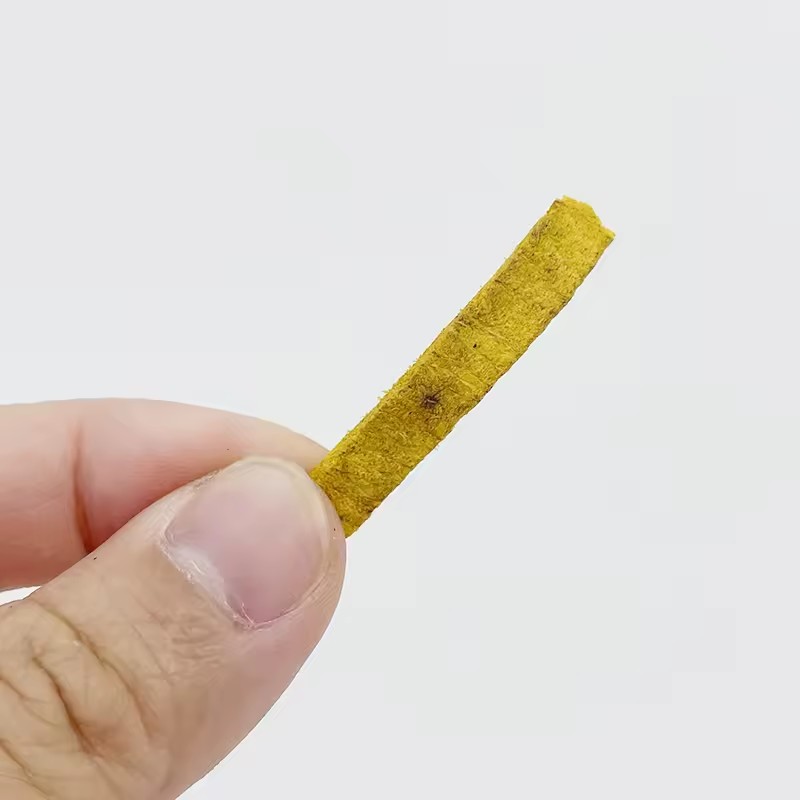
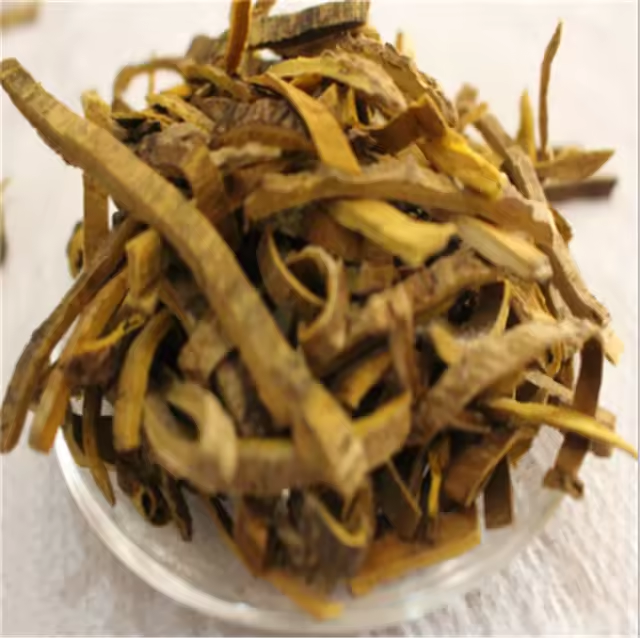

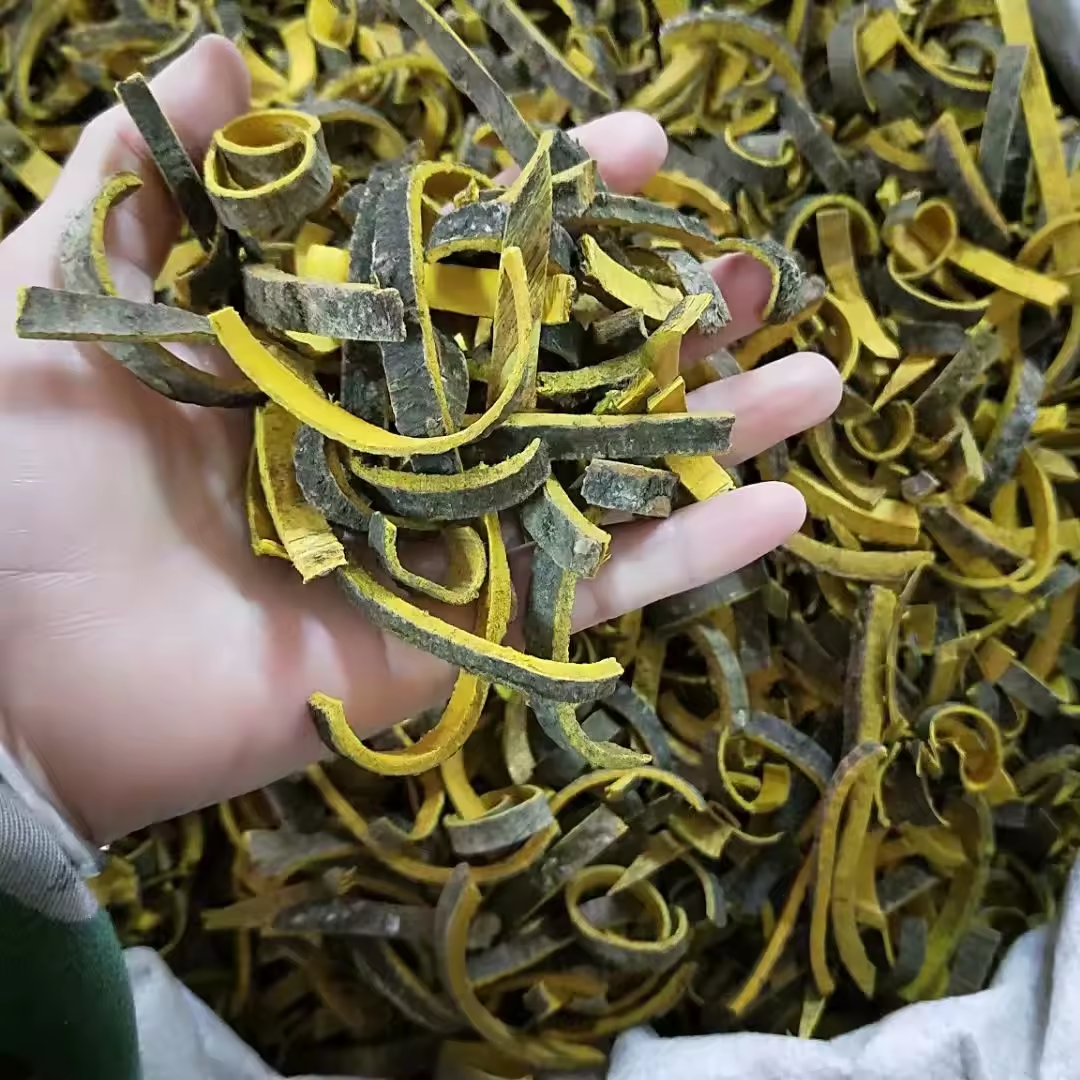


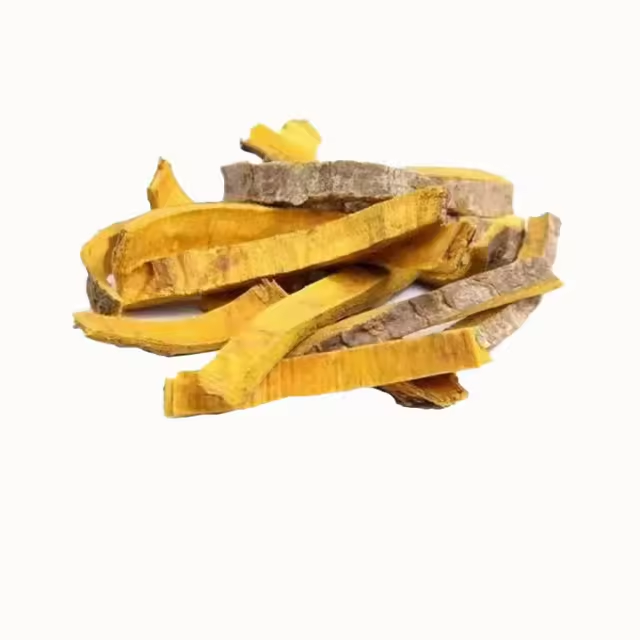

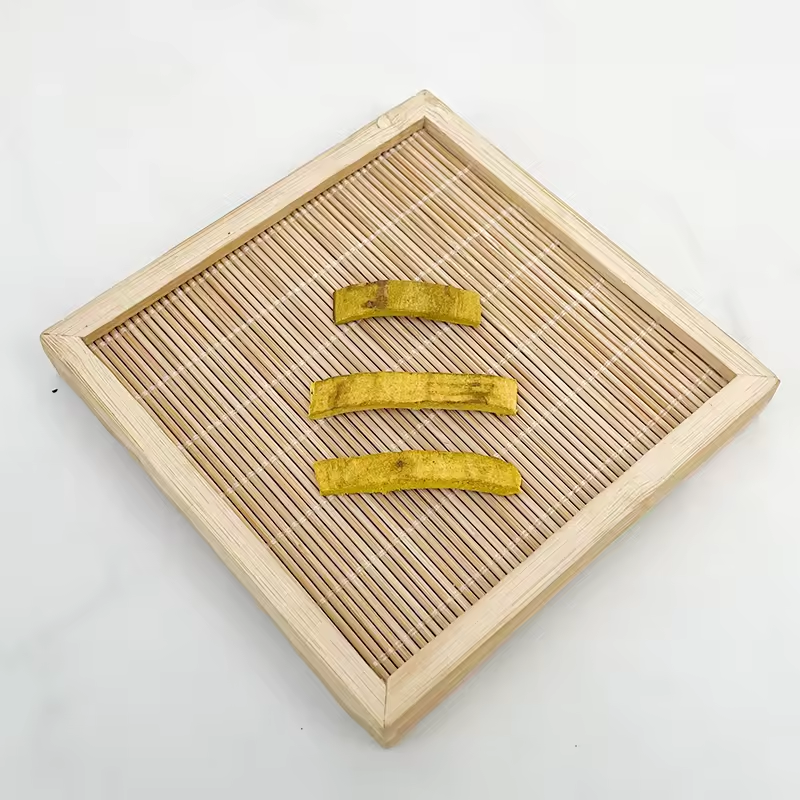

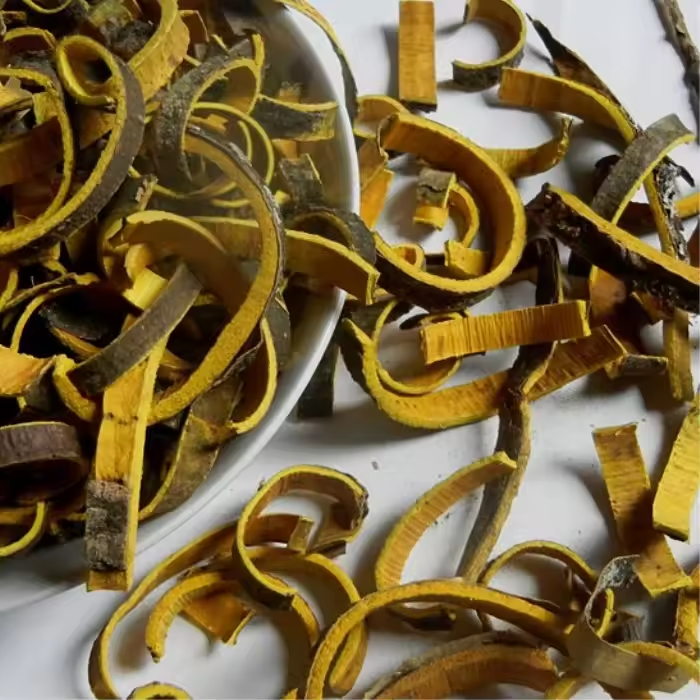



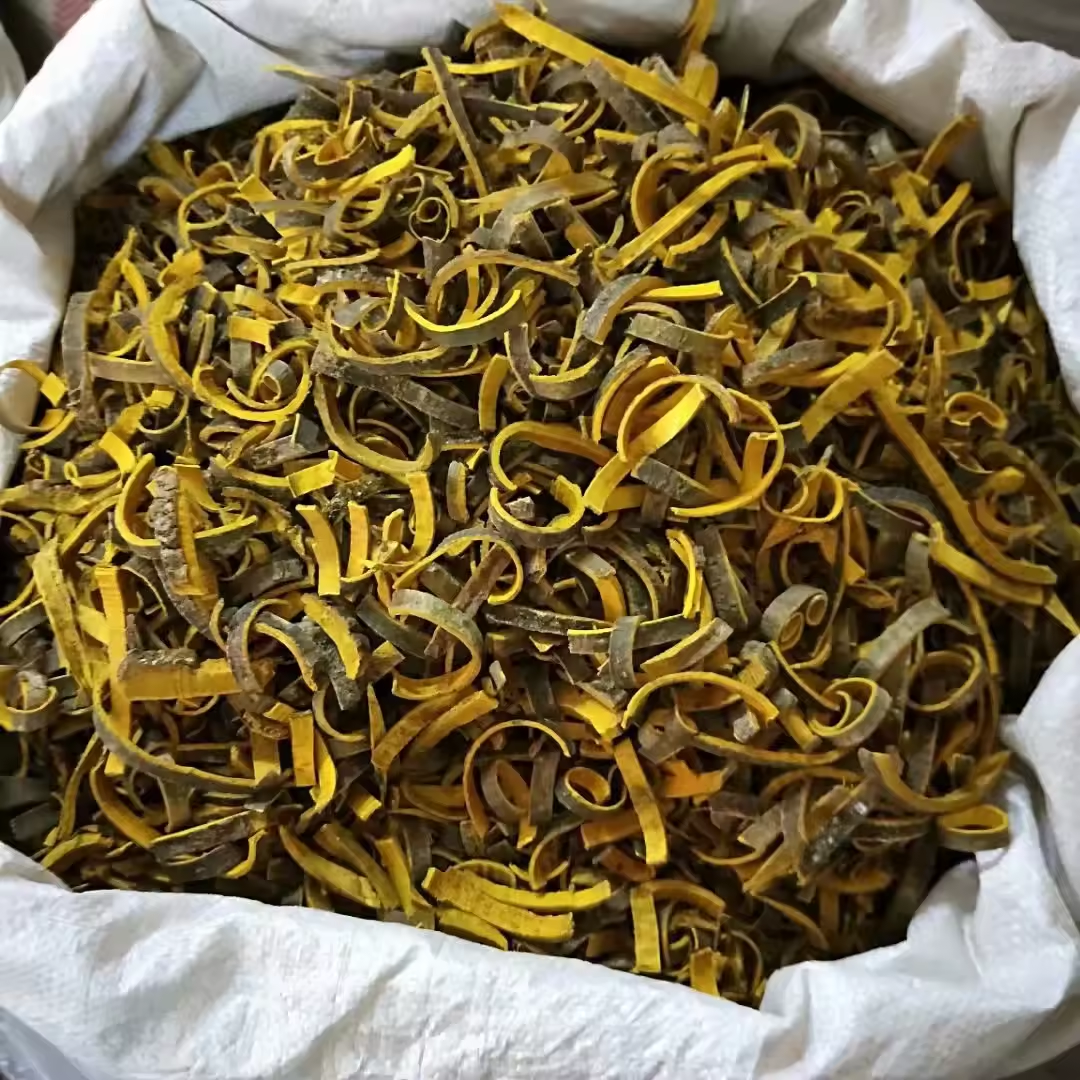
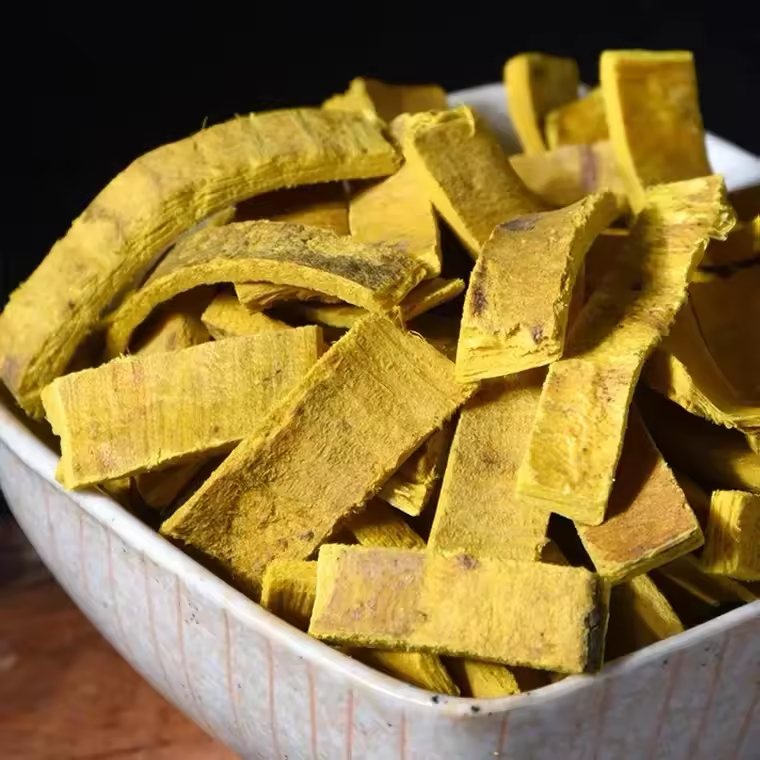

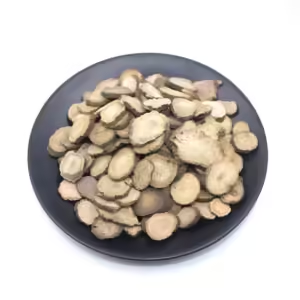

Recensioner
Det finns inga recensioner ännu.